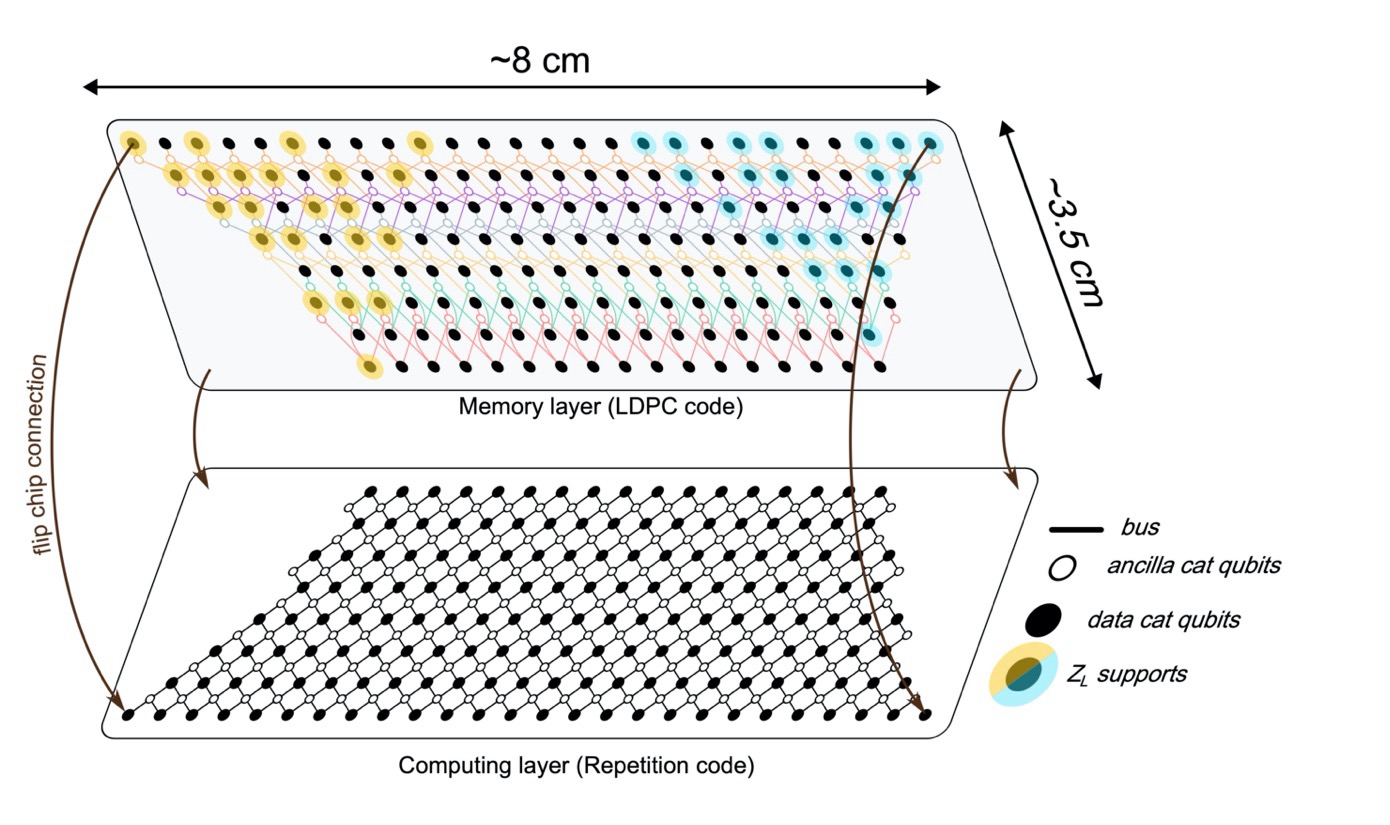
NISQ2LSQ
From NISQ to LSQ: bosonic corrector codes and LDPC
Project manager
Anthony Leverrier, Inria
Overview
The NISQ2LSQ project aims to significantly accelerate R&D in the theory and design of hardware-efficient error-correcting codes.
Keywords: Error correction, bosonic codes, photonic codes, LDPC codes, fault tolerance
Website: https://project.inria.fr/nisq2lsq/
In a nutshell
The NISQ2LSQ project focuses on the two most promising solutions for error-correcting codes: bosonic codes and LDPC (Low-Density Parity-Check) codes, and on two types of physical platform: superconducting circuits and photonic circuits. The first 5-year goal is to demonstrate a prototype of a superconducting quantum processor based on cat qubits, fault-tolerant to order 1, then to order 2, and pave the way for rapid scaling up to LSQ by the end of the project. In the field of photonics, where scaling up can take many forms, the aim is to define measurement-based computational architectures exploiting these codes, and to experimentally demonstrate the elements necessary for their construction. In the field of LDPC codes, the aim is to develop codes that are essentially optimal in terms of encoding rate and error correction, as well as efficient decoding algorithms and techniques for performing fault-tolerant logic operations specific to LDPC codes. Emphasis will be placed on building small codes, with a limited number of long-range interactions, in order to accelerate their integration with technologies based on photonic qubits or Rydberg atoms.
Challenges
- Explore promising alternatives to surface codes: bosonic codes, photonic approach, quantum LDPC codes.
Tasks
- WP0 : Project management
- WP1: Superconducting bosonic codes
- WP2: Photonic quantum codes
- WP3: LDPC codes
Consortium
- Alice & Bob
- CEA Leti Grenoble
- Centre de Nanosciences et de Nanotechnologies (C2N, CNRS / Université Paris-Saclay)
- ENS de Lyon
- Groupe de Recherche Rouennais en Informatique Fondamentale (GR2IF, Université de Rouen Normandie, UFR Sciences et Techniques)
- Inria Paris, Inria Saclay, Inria Lyon, Inria Nancy
- Institut de Mathématiques de Bordeaux (IMB, Bordeaux INP / CNRS / Université de Bordeaux)
- Institut de Mathématiques de Marseille (I2M, Aix-Marseille Université / CNRS)
- Laboratoire Charles Fabry (LCF, CNRS / Institut d’Optique Graduate School)
- Laboratoire de physique & modélisation des milieux condensés (LPMMC, CNRS / Université Grenoble Alpes)
- Laboratoire de physique théorique et hautes énergies (LPTHE, CNRS / Sorbonne Université)
- Laboratoire Kastler Brossel (LKB, CNRS / Collège de France / ENS_PSL / Sorbonne Université)
- Laboratoire Matériaux et Phénomènes Quantiques (MPQ, CNRS / Université Paris Cité)
- Laboratoire PHotonique ELectronique et Ingénierie QuantiqueS (PHELIQS, CEA / Grenoble INP / Université Grenoble Alpes)
- LIP6 (CNRS / Sorbonne Université)
- Majulab (Singapour)
- Service de physique de l’état condensé (SPEC, CEA / CNRS)
- XLIM (CNRS / Université de Limoges)